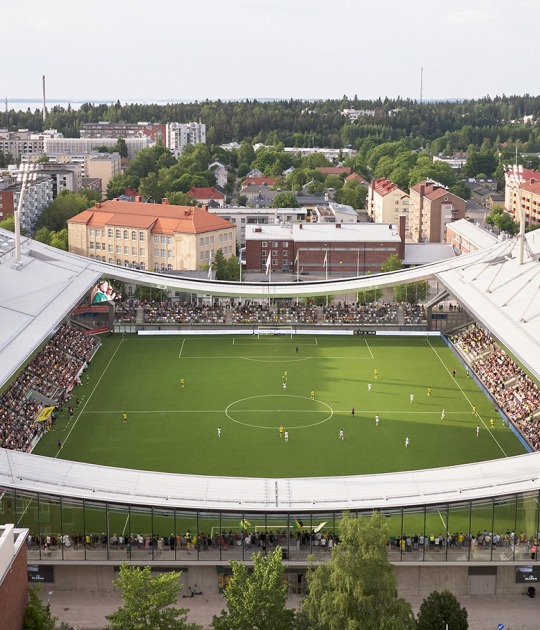This is mainly due to the separation of uses found in a building of these characteristics, on the one hand the public use belonging to the inspection area where the machinery and workers are located, which corresponds to the external box. On the other hand, we contracted the private use, where the administration and the offices that correspond to the inner box are located.
The solution in terms of façade is the use of cellular polycarbonate panels with four different opacity intensities, which achieves a perfect interior lighting inside the building with respect to its north / south position.
Project description by Sau Taller d’Arquitectura
When designing a car service building the main challenge is to organize two very different functional programs. On one hand, administrative area, essentially internal, which has the same requirements as an office building: internal flexibility to face future changes, working areas with natural light, appropriate temperature... On the other hand, the service area, which is basically external and is a wide space divided by the service lines and their machinery.
In front of this dichotomy the idea is working with a building within another. The comfort level required for the service area is the minimum one compared to the building as a whole. In this area the building will protect us from the main meteorological agents. This requirement improves working conditions and protects machinery. For that reason a general skin was designed to act as a first filter which will protect not only the service area but also the administrative module understood as a building in itself.
The whole skin is understood as one single façade, to sort it out cellular polycarbonate of 4 cm thickness was the choice for being a light material with low ecological footprint, easy to recycle, with high thermal performance and allows light to go through. 4 different intensities of blue tones are located along the façade depending on solar radiation, forming a gradual transition where darkest tones face south.
A 50 cm panel is used as a module to shape the façade. A light structure sits on square tubular profiles. This gives equitable hierarchy to the structural system and its covered with square pyramids made by boyd and rectangular profiles which are cable-stayed with 20mm diameter rebars working as a fink structure. An open area is left at the top of the pyramids to catch natural light and provide natural ventilation through venturi effect.
The administrative area building which is located inside the polycarbonate skin has 2 levels and occupies the same space as one service line. This area is designed as well with metallic structure, with light decking plate slabs and to solve thermal comfort, internal walls are made by plasterboard with rock-wool insulation. Internal partitions are made by panels and screens giving huge space flexibility complemented with an access flooring for MEP.
The functional programm is organized by levels of privacy: on one side public open areas, like main reception or waiting area, and on the other side internal usage areas which can be divided into private (offices) and common (administrative and pantry). In both, openings (doors and windows) go through the skin to rich the exterior. That way users can control the building from inside and enjoy public realm at the same time.











































